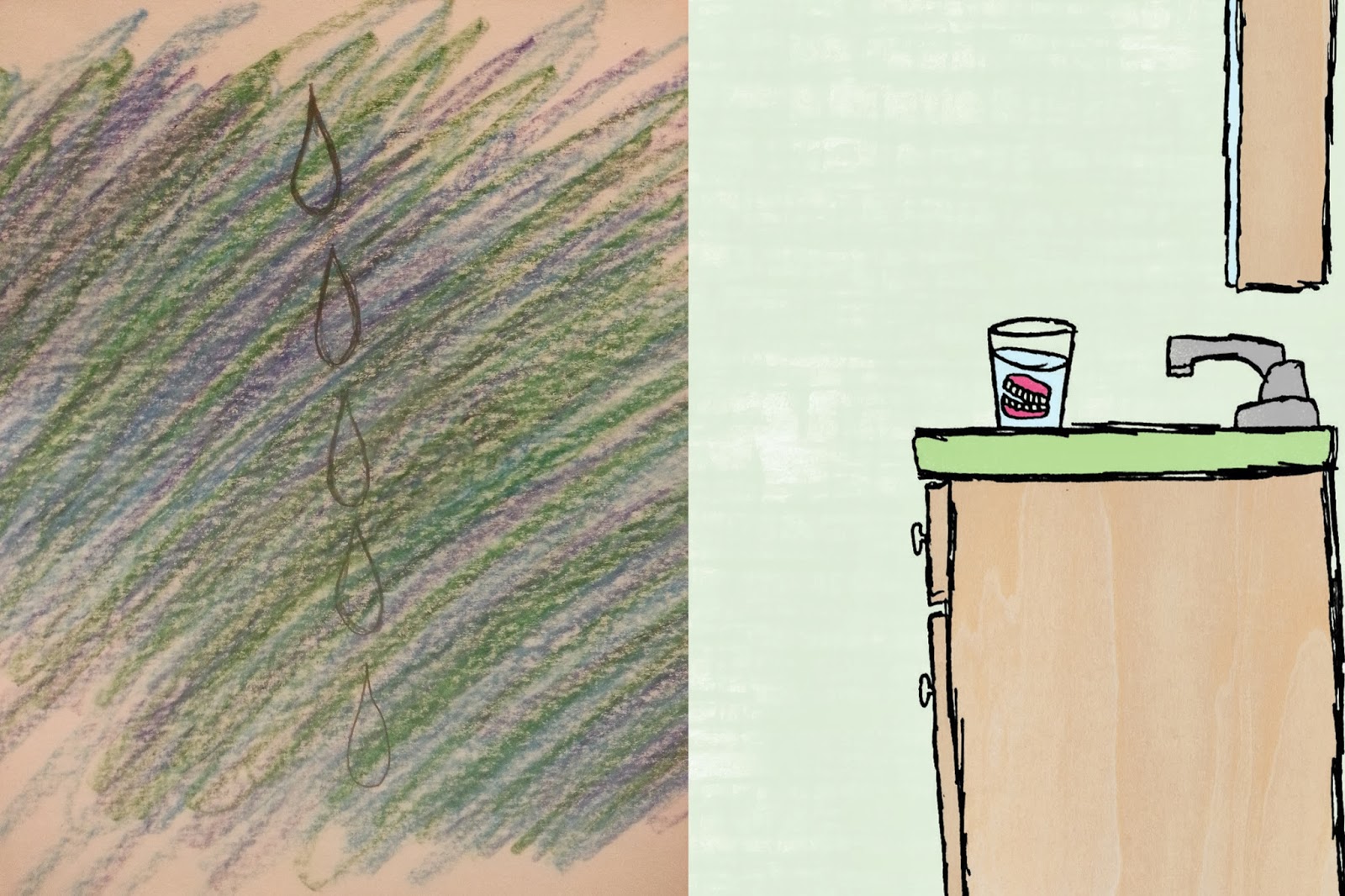Looking at the evolution of my own series, as an artist I can really only account for the part I had control over. It was definitely interesting to see how my idea evolved as it was worked on my five different people. It did turn into something of a narrative “exquisite corpse” with each artists’ voice coming through even though there was a surprising bit of common ground between the different stories. Most obviously, all except the last dealt explicitly with doctors and hospitals (and the last the idea might be implied). It quickly evolved into dealing with strange conditions, tension, and even terror, which had existed in my original story to an extent but I had tried to downplay with the last sentence and give it more of a humorous note (see the earlier post for my series).
As for the stories I added to the other series’ in my group, I tried at first to keep the overall tone of the “tiny stories” consistent. That worked out pretty well for the first three contributions I made, but with Hannah and Neeko’s series’, I might have taken things down a less-serious route.
But apart from tone, with each I tried I tried to pick a different attribute or set of attributes to tie it to what had already been done. After writing my own tiny story the first contribution I made was to Liz’s. I liked the idea she had of writing a poem so I decided to keep the rhyme scheme. I focused on a different element that was just a detail in the picture she made, the flowers, but gave them their own story. Both stories are about unrequited love, but in the latter, the protagonists (or rather, the victims) are the flowers being offered to another. I also gave it my best shot at doing the art work in a similar style—which didn’t exactly turn out well, so it was my last attempt at doing so.
Liz's artwork for her original story and the art that I added. Scroll to the end to read.
With Kelton’s series I was more flexible. It was the idea of a one-sided relationship that I continued.
The image for the 2nd story in Kelton's series (by Liz) and the 3rd (by me).
With Hannah’s series I tried to pass on something of the themes of beauty and maybe a hint of self-consciousness, even though mine took more of a ridiculous tone and was more exaggerated.
The image for the 3nd story in Hannah's series (by Liz) and the 4rd (by me).
Finally, with Neeko’s story it was the idea of having something hidden and about to be exposed.
The images for the 4th and 5th story in Neeko's series.
I didn’t really notice until looked back on what I had written, but there is something of the same sense of humor in all five of the stories I added. It was something of myself I contributed that changed the outcome of the stories even though I was trying to keep things thematically similar. That was most interesting thing I learned from this assignment: that we can’t exactly separate the art from the artist. Unavoidably, we will always leave impressions of ourselves on our work. That’s part of what makes art so satisfying. For me it was a comforting thought that even in a culture where much or all of what we produce might get lost in a kind of giant collective experiment, some part of ourselves will always remain in the art we influence.
Click "Read More" below to read the stories I wrote for the others' series.






.JPG)










